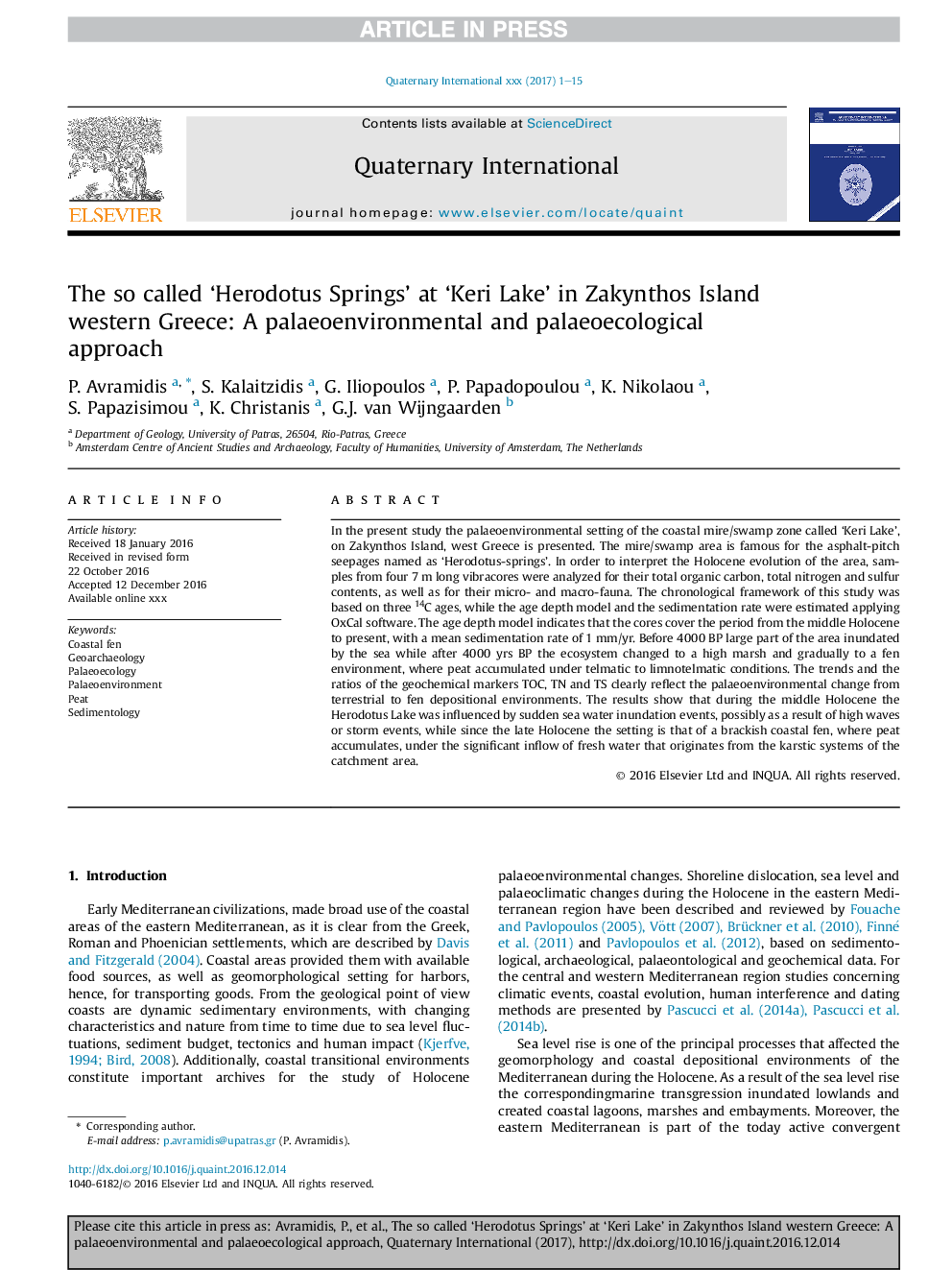| Article ID | Journal | Published Year | Pages | File Type |
|---|---|---|---|---|
| 5113175 | Quaternary International | 2017 | 15 Pages |
Abstract
In the present study the palaeoenvironmental setting of the coastal mire/swamp zone called 'Keri Lake', on Zakynthos Island, west Greece is presented. The mire/swamp area is famous for the asphalt-pitch seepages named as 'Herodotus-springs'. In order to interpret the Holocene evolution of the area, samples from four 7Â m long vibracores were analyzed for their total organic carbon, total nitrogen and sulfur contents, as well as for their micro- and macro-fauna. The chronological framework of this study was based on three 14C ages, while the age depth model and the sedimentation rate were estimated applying OxCal software. The age depth model indicates that the cores cover the period from the middle Holocene to present, with a mean sedimentation rate of 1Â mm/yr. Before 4000 BP large part of the area inundated by the sea while after 4000Â yrs BP the ecosystem changed to a high marsh and gradually to a fen environment, where peat accumulated under telmatic to limnotelmatic conditions. The trends and the ratios of the geochemical markers TOC, TN and TS clearly reflect the palaeoenvironmental change from terrestrial to fen depositional environments. The results show that during the middle Holocene the Herodotus Lake was influenced by sudden sea water inundation events, possibly as a result of high waves or storm events, while since the late Holocene the setting is that of a brackish coastal fen, where peat accumulates, under the significant inflow of fresh water that originates from the karstic systems of the catchment area.
Related Topics
Physical Sciences and Engineering
Earth and Planetary Sciences
Geology
Authors
P. Avramidis, S. Kalaitzidis, G. Iliopoulos, P. Papadopoulou, K. Nikolaou, S. Papazisimou, K. Christanis, G.J. van Wijngaarden,
